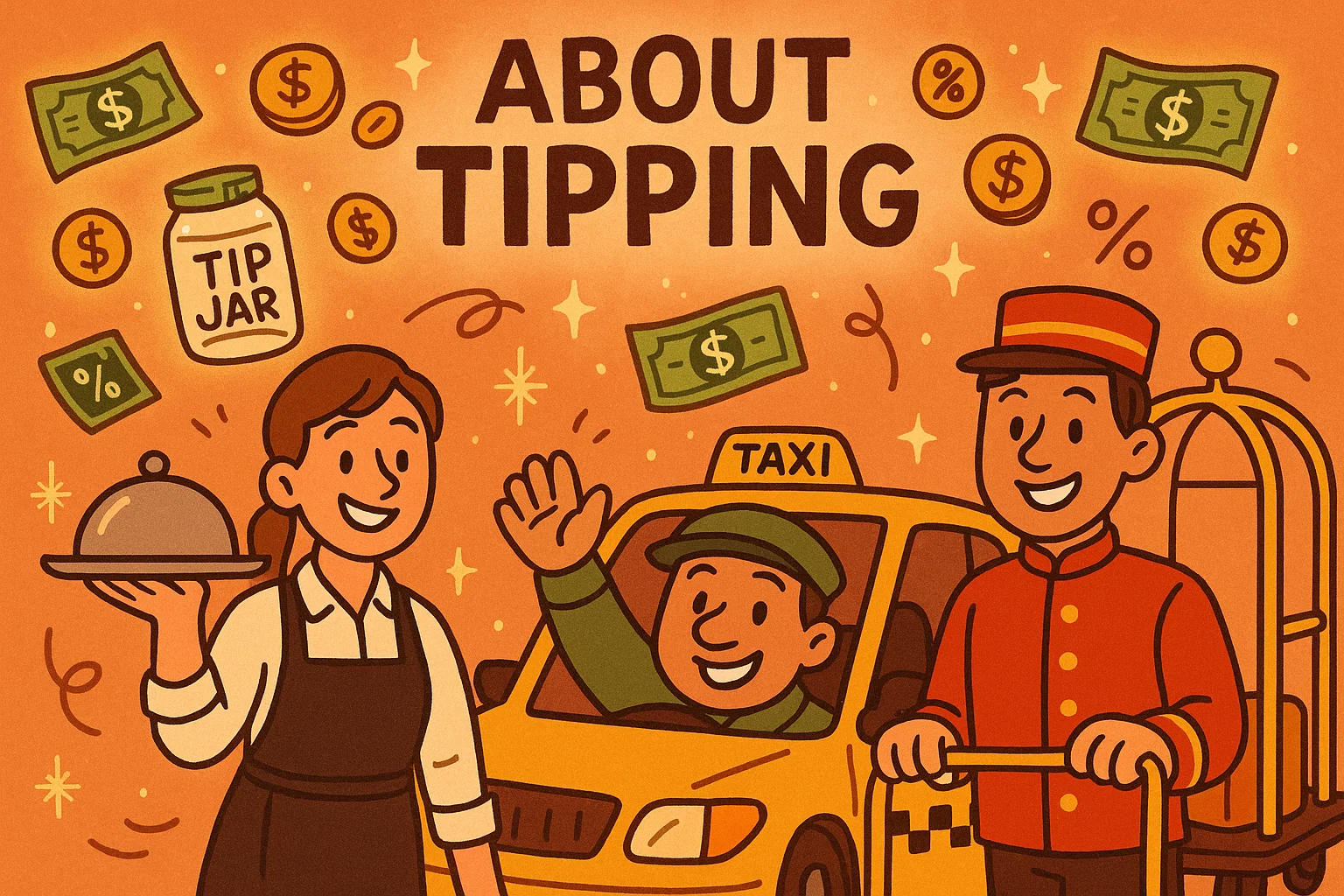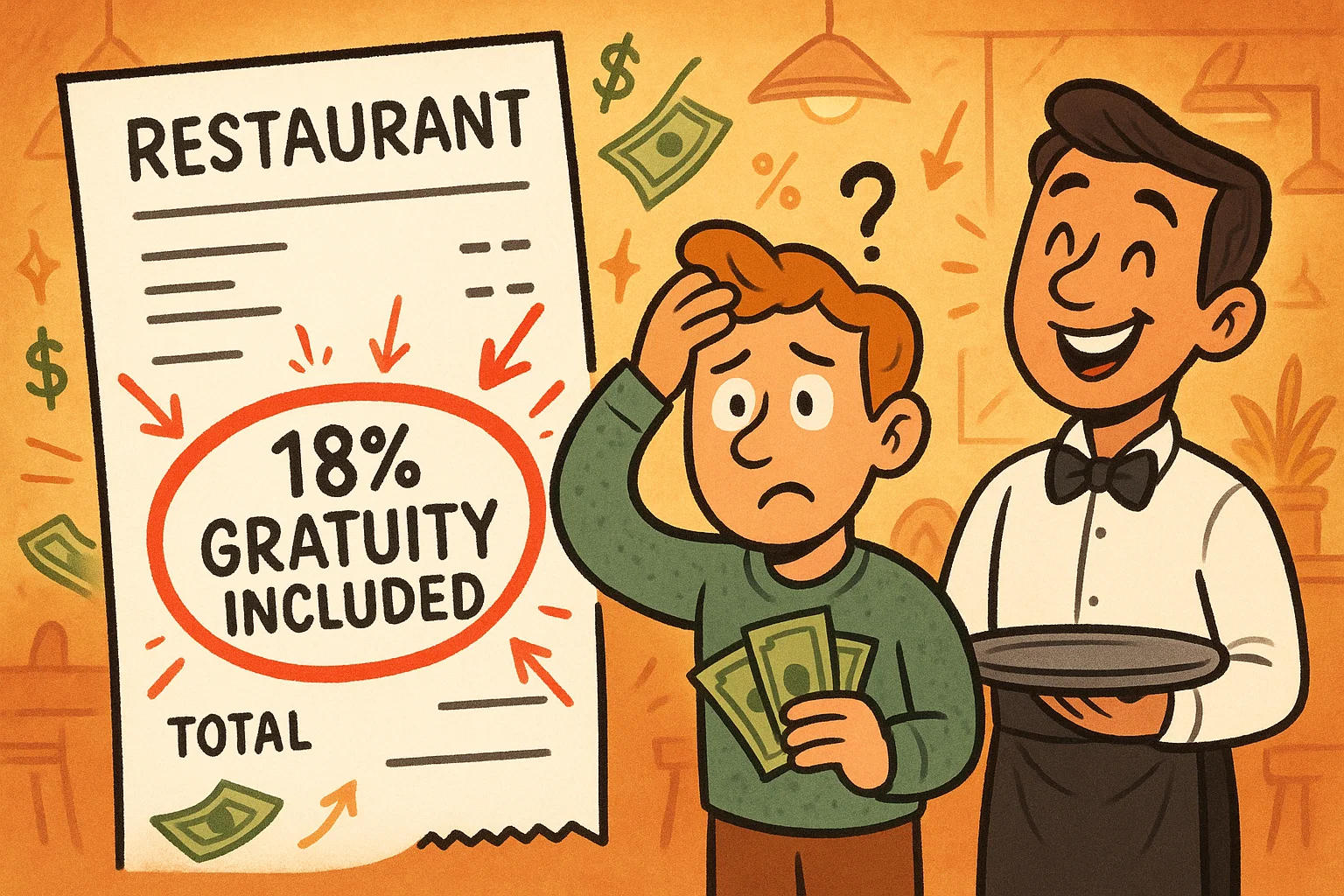Tipping, also known as a gratuity, is a common practice that serves as an additional sum of money given to service workers for their services. It is a way for customers to express appreciation for good service, supplementing the often lower wages service workers receive. However, tipping norms and expectations vary significantly across cultures and regions, leading to both confusion and curiosity among travelers and locals alike.
In this blog post, we will explore the definition of a tip, how much to tip in different service scenarios, the cultural differences surrounding tipping, automatic gratuity practices, and a closer look at tipping customs across the globe. Additionally, we will provide a comprehensive guide on typical tip amounts in the U.S. and Canada, and discuss when and why tipping is necessary.
Check our Everyday Life to learn more helpful calculators.
What is a Tip?
A tip or gratuity is an additional payment given by a customer to a service worker, typically for providing exceptional service. The amount of the tip is often discretionary, meaning that the customer decides how much to give based on the service provided. While tipping is a common practice in many parts of the world, its acceptance, expectations, and amounts can vary widely.
Tipping plays a significant role in the service industry by supplementing workers' wages. Many service workers, such as restaurant servers, taxi drivers, and hotel staff, depend on tips as a major part of their income. In fact, in countries like the U.S., tips can make up a large percentage of a worker’s earnings, with some employees earning below minimum wage and relying on gratuity to boost their income.

Cultural Differences in Tipping Practices
Tipping customs are not universal. They can differ not only by country but also within regions of the same country. Cultural attitudes toward tipping range from it being a standard part of service to being seen as an insult.
Tipping in the U.S. and Canada
In countries like the United States and Canada, tipping is a customary and often expected practice. Service workers in restaurants, bars, hotels, and other sectors rely heavily on tips for their income. Typically, a tip ranges from 15% to 20% of the total bill in restaurants, although this can increase depending on the quality of service.
In some cases, tips are automatically included in the bill, especially for large groups or parties. It’s important to check your bill carefully to ensure that a tip has already been added.
Tipping in East Asia
On the other hand, in East Asian countries such as Japan, tipping can be seen as offensive or unnecessary. In these cultures, service workers are paid a fair wage, and their dedication to customer satisfaction is considered a part of their job. As a result, offering a tip may be perceived as suggesting that the worker is not being paid enough, which could be insulting.
In Japan, for example, excellent service is the expectation, not the exception, and is deeply rooted in the culture of hospitality. This is also true for other East Asian countries such as China and South Korea, where tipping is rare and can make the recipient uncomfortable.
Tipping in Europe
In many European countries, tipping practices vary. For instance, in the UK, tipping is generally not obligatory but appreciated, with 10%-15% being a common amount for restaurant service. In France, service charges are typically included in the bill, but leaving a small tip or rounding up the bill is still common practice.
In Mediterranean countries like Spain, Greece, and Italy, tipping is customary in restaurants, though it may be modest—often rounding up the bill or leaving a few euros. However, it is not mandatory.
Automatic Gratuity
Automatic gratuity is a common practice in some restaurants, particularly for larger parties. This means that a set tip percentage, typically around 18%-20%, is automatically added to the bill. This is done to ensure that service workers are compensated fairly for serving larger groups, where the service requirements may be more demanding.
However, this practice can sometimes be confusing for customers. In some cases, patrons may not realize that the gratuity has been added, and they might leave an additional tip on top of the automatic gratuity, unintentionally over-tipping. Always check your bill to see if the tip has already been included.
How Much to Tip: A Breakdown by Service Type
Tipping amounts can vary depending on the type of service you receive. Below are some general guidelines for tipping in different sectors.
-
Restaurants and Bars
In the U.S. and Canada, a 15%-20% tip is the norm in restaurants. Bartenders generally expect $1-$2 per drink, or 10%-15% of the total bar tab. Keep in mind that the amount of the tip can increase with the quality of service, and higher-end establishments may warrant a more generous tip. -
Food Delivery
For food delivery, a tip of 15%-20% is common, but the amount may vary based on the size and complexity of the order. In some cases, especially for smaller orders, a flat amount such as $3-$5 is appreciated. -
Hotels
Hotel service staff also rely on tips for their income. Room service attendants typically expect a 15%-20% tip if gratuity is not included in the bill. For housekeeping, $1-$2 per person per night is a reasonable amount, though this can vary based on the quality of service and the hotel’s star rating. -
Automotive Services
Tips for automotive services like mechanics and car detailers are not generally expected but may be appreciated for good service. A tip of $5-$10 for a quick service or repair is common. -
Movers and Delivery Personnel
Movers or furniture delivery staff may not always expect a tip, but if they go above and beyond to ensure the safe and timely delivery of your items, a tip of $5-$20 per person is appreciated. -
Hair Salons and Spas
For personal grooming services such as haircuts, manicures, or massages, tips typically range from 10%-20% of the service cost. The exact amount depends on the quality of service and the price of the service. -
Taxi and Limo Drivers
Taxi and limousine drivers generally expect a 15%-20% tip, depending on the length of the ride and the quality of service. For shorter trips or rides in taxis, rounding up the fare to the nearest dollar is also common. -
Tour Guides
Tour guides usually expect $1-$5 per person, depending on the length and quality of the tour. For specialized or private tours, a higher tip is often appreciated.


